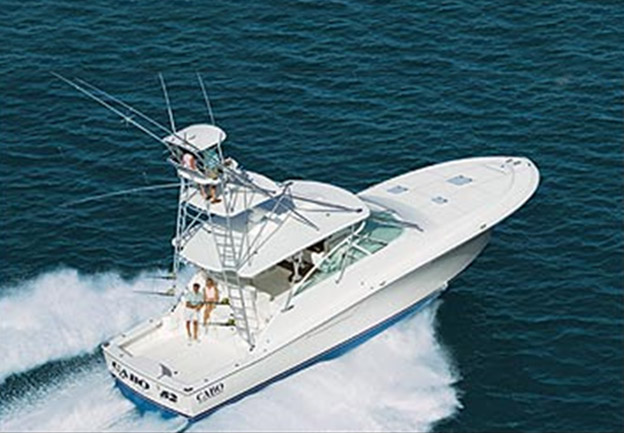- Alaskan Yachts
- Azimut Yachts
- Back Cove Yachts
- Beneteau Yachts
- Benetti Superyachts
- Bertram Yachts
- Boston Whaler
- Broward Yachts
- Buddy Davis Sportfish
- Burger Yachts
- Cabo Yachts
- Catamarans
- Carver Motoryachts
- Center Console
- Chris-Craft Yachts
- Cruisers Yachts
- DeFever Trawlers
- Dufour Sailboats
- Fairline Yachts
- Feadship Yachts
- Ferretti Yachts
- Formula Yachts
- Fountaine Pajot Cats
- Grady-White
- Grand Banks Trawlers
- Hargrave Yachts
- Hatteras Yachts
- Hinckley Picnic Boats
- Horizon Yachts
- Hydra-Sports
- Intrepid Boats
- Jarrett Bay Sportfish
- Jeanneau Yachts
- Kadey-Krogen Trawlers
- Lazzara Yachts
- Luhrs Sportfish
- Marlow Yachts
- Maritimo Yachts
- Marquis Yachts
- McKinna Motoryachts
- Meridian Yachts
- Midnight Express
- MJM Yachts
- Mochi Craft
- Neptunus Motoryachts
- Nordhavn Trawlers
- Nordic Tugs
- Ocean Alexander Yachts
- Offshore Yachts
- Outer Reef
- Oyster Sailing Yachts
- Pacific Mariner Yachts
- Palmer Johnson Yachts
- Pershing Yachts
52 Cabo Express 2006
Boat Review

Source: Capt. Patrick Sciacca, Power & Motoryacht Magazine
I’m going to take her from the tower, okay?” I enthusiastically inquired with Cabo Yachts’ international sales manager Steve Boerma. I’m a certified tuna-tower nut, although I don’t entirely know why. Perhaps it’s because I grew up with one on my dad’s boat, run my own boat from her tower, or just enjoy the solitude up top. Maybe it’s all of the above. I do know that when I saw the optional Pipewelders tower onboard Cabo’s 52 Express shining in the midmorning South Florida sun, I had to check it out.
I worked my way up to the tower’s helm, selected the station, and opposed the single-lever MAN electronic controls just to the right of the wheel (the bridge-deck helm is set up in Palm Beach fashion) to spin and line up the 52 on a down-sea heading. There was a steady 15- to 18-knot breeze, and I was curious what effect the short-spaced three-footers might have on her. I knew if there was going to be motion during the wring out, I’d feel it up here.
I put the throttles fully forward as the 52’s optional twin 1,550-hp MAN diesels (1,360-hp MANs are standard) quickly spun up to 2340 rpm and my test boat edged toward her average top hop of 47 mph. Yep, that’s 55,950 pounds of boat skating across the Atlantic at the equivalent of 40.5 knots. I put the wheel hard over at WOT, and her power-assist steering easily helped carve a boat-length-and-a-half turn with only about a 200-rpm drop. Even while I was on the tower, she was steadfastly stable. Of course, this speed has a cost: 166 gph. However, when I dialed the MANs back to their 2000-rpm cruise, the 52 sped along at 40.5 mph (35 knots) at just 114 gph, and she tracked straight on all points, with only occasional and minimal correction needed from the wheel. I concluded that this boat is destined to become a Bimini-start leader and first with lines in the water at a tournament near you.Her speed comes from a combination of that big power turning big wheels—34×53 five-blade Veems, to be exact—and a Michael Peters modified-V hull. Peters is notable for designing boats that can go really fast (try 175 mph), but he’s also drawn lines for a 38-knot, 78-foot Garlington convertible and a 54-knot, 38-foot Sterling center console. He’s additionally responsible for the Cabo 40 Express, which initiated a shift in look and lines for the builder and which, like the 52, features a fine entry and exaggerated flare to keep spray to a minimum.
Also contributing to her impressive speed is a hull that is completely cored, a first for Cabo Yachts. Boerma told me that to construct the boat in solid glass would have meant too much weight, and that impressive top end might not be achievable. So the fiberglass hull is vacuum-bagged with Corecell, which adds stiffness and strength without adding excessive weight. If the lighter-weight cored hull (that is, if 27-plus tons can be considered light) was going to pound, it would’ve during my test day’s conditions. It didn’t. In fact, running straight into the breeze, she could’ve been drier, especially considering that I was running the 52 at 40 mph into a 17-mph breeze for a true wind speed of 57 mph. (We should have put up the optional isinglass around the bridge deck.)
Boat Specifications: 52 Cabo Express 2006
Boat Type: Sportfisherman
Standard Power: 2/1,340-hp MAN V12-1360 CRM diesel inboards
Optional Power: 2/1,523-hp MTU 10V 2000, 2/1,550-hp MAN v12-1550 CRM, or 2/1,550-hp Caterpillar C32 diesel inboards
Length Overall (LOA): 52’1″
Beam: 17’9″
Draft: 4’2″
Weight: 55,950 lbs.
Fuel Capacity: 1,400 gal.
Water Capacity: 200 gal.
Standard Equipment: 3/Stidd bridge-deck chairs; 21.5-kW Onan genset; 2/VacuFlush MSDs; Oil X-changer; L-shape lounge, tackle cabinet, and ice maker on bridge deck; 5/rod holders; 80-gal. livewell; bait-prep center w/ sink, rigging board, insulated icebox; 2/in-deck fishboxes; transom door w/ top gate; 31,000-Btu Cruisair A/C for saloon and staterooms; Bose lifestyle 38 entertainment system; teak interior; Sub-zero ‘fridge and freezer; Sharp Carousel microwave-convection oven; 4-burner Kenyon cooktop; Corian countertops
Test Engines: 2/1,550-hp MAN V12 1550 CRM diesel inboards
Props: 34×53 Veem five-blade
Steering: hydraulic w/ power assist
Controls: Rexroth single-lever electronic at bridge-deck helm; MAN
Optional Equipment On Test Boat: Pipewelders custom tuna tower package; teak-and-holly sole in saloon; double-spreader outriggers, center ‘rigger; 30,000-Btu Cruisair bridge-deck A/C; refrigerator plates for cockpit fishboxes; teak deck in helm areas; Palm Beach helm pod; bridge-deck table; electronics package w/ Simrad AP25 autopilot; Flexgate RC36 compass; Northstar 972 GPS-chartplotter w/ 15″ display; 2/Icom 602 VHFs; Furuno electronics: 2/15″ MU-155C color display, Ethernet crossover cable, NavNet VX2 GPS, plotter, BBFF3 dual-frequency sounder